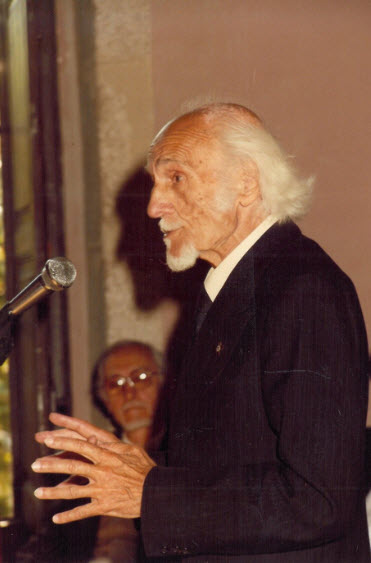Catalan sculptor and collector. Following his arrival in Llinars in 1934, he established a deep bond with the town, to which he bequeathed a number of wonderful sculptures, such as Our Lady of the Meadow in the church, the Chamois in Plaça Caritg and the Deer in the garden outside Can Lletres.
Early on, he moved into the Can Rossell farmhouse along with his family, where they would spend extended periods of time. He later had a house built in 1963.
Marès was often spotted strolling through the streets and squares of Llinars. The sculptor’s legacy is epitomised by the image of Our Lady of the Meadow, which was blessed on 8 September 1941, after the previous sculpture was burned in the initial stages of the Civil War. He also sculpted the famous Chamois in Plaça Caritg and its “relatives”, who are currently grazing in the garden outside Can Lletres.
Due to both his career as an artist and strong connection with the town, Marès was honoured in 1984 with a street in his name, which he himself inaugurated. Therefore, the former Carrer de la Marina henceforth became known as Carrer Frederic Marès.
Sculptor, collector and educator, Frederic Marès Deulovol (Portbou, 1893 – Barcelona, 1991) had a long professional career dedicated not only to the production of art, but also to the preservation of cultural heritage. From an early age, his innate talent for drawing and love of collecting never ceased to amaze: drawings, prints, chocolate wrappers and toys, which he treated with the utmost care. And thus he continued, eventually amassing numerous collections of all manner of objects, as well as books of incalculable value, documents and engravings of interest to bibliophiles, booksellers and collectors.
He also garnered international acclaim, rubbed shoulders with some of the period’s most important sculptors and left behind a wealth of artworks in the form of commemorative, ornamental, funerary and medallist sculptures.
Marès trained at the School of Fine Arts, where he would become a teacher years later. In 1911, he received a special award from the Barcelona City Council as the most outstanding student, a distinction which gave him the opportunity to visit some of Europe’s most important museums, collections and galleries for one year. A key moment in his career was the time he spent in Paris in 1913, during which he continued to study, befriended artists such as August Rodin and took part in both individual and collective exhibitions.
